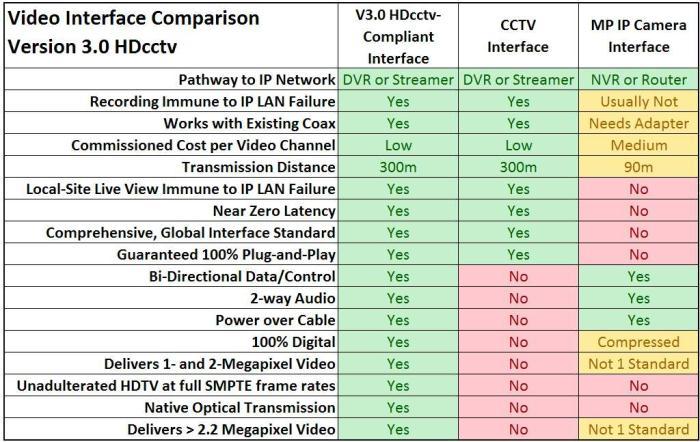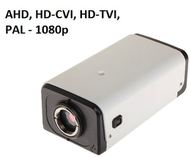-
CCTV
- Ready-made CCTV kits
- HD SDI
- IP Systems
- AHD CCTV
- TVI CCTV
- CVI CCTV
- Video surveillance for transport
- Storage devices
- Portable video cameras
- Thermal, Thermal imaging sights
- Enclosures for CCTV recorders
- Cameras
- Lenses
- Brackets and Housings
- Monitors
- Devices for video transsmision, CONVERTER
- Power supply, UPS
- Pan/Tilt Scanner
- IR+LED illuminators
- cables
- anti surge protection
- silicagel
- Microphones
- Connectors
- Архив
- Alarm systems
- Access control
- Intercom systems
- Fire safety systems
- Videodoorphones, doorphones and intercoms
- Electric gate automation systems and barriers
- Networking
- Sound systems
- Switching and Server Cabinets, accessories
- Tools and accessories
- Cables covers and accessories
- Power supply and accumulators
- HDMI
- Accessories for caravans and campers
- Wiring
- Solar energy
- Wind energy
- Contacts
HDcctv
Specification RoadmapThe HDcctv Standard derives from a set of standards, including SMPTE-292M, developed by the Society of Motion Picture and Television Engineers for application in broadcast television studios. This broadcast television technology, called "High-Definition Serial Digital Interface", or HD-SDI, has been technically proven through application in television studios worldwide since the late 1990's. Cost effectiveness is defined differently for surveillance applications than for broadcast applications. Through a unique cross-industry license agreement executed in 2009, SMPTE partnered with the HDcctv Alliance to project the HD-SDI technology into surveillance via the HDcctv Standard.
Planned versions of the HDcctv Standard offer successively greater cost effectiveness for surveillance, by adding capabilities such as 2-way communications and up-the-cable power and by increasing performance such as 300m transmission over low-grade RG59 coaxial cable and pixel arrays up to 20 million pixels per frame.
Look for the unique HDcctv logo to be sure:
> 100m transmission over even low-grade RG59
plug-and-play interoperability with other compliant products
forward compatibility with future versions of the standard
Here follows an illustrated roadmap of early versions of the HDcctv Standard. (The circuit examples are conceptual in nature and intended for illustrative purposes only.)
Version 1.0
720p25/30, 720p50/60, and 1080p25/30 transmission over at least 100m of RG59 coaxial cable
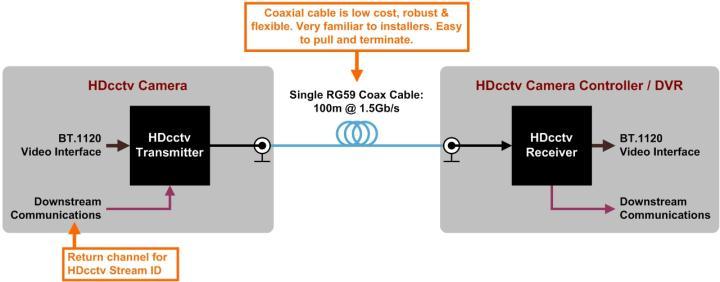
Ratified November 2009
V1.1 Compliance Certification Standard ratified September 2010
First products certified compliant January 2011
Expected minimum transmission distance as a function of cable make and model (new cable):
Belden 7731A / 9292 RG11 - 14AWG Solid Low Loss digital coax = 330m
CT125 RG11 – 14 AWG Solid Core, Low Loss TV and CCTV = 295m
Canare L-5CFB RG6 – 18 Gauge Solid Core, Serial Digital cable = 230m
Belden 1694A RG6 – 18 Gauge Solid Core, Serial Digital cable = 230m
West Penn 815 RG59/U – 1 20AWG Solid Core = 215m
Belden 82248 RG6 – 18 AWG Solid (Plenum) = 185m
West Penn 252815 RG59/U – 2 Conductor 20AWG Solid + 18AWG – Siamese = 170m
Belden 543945 RG59U - 20 AWG (HDcctv V1.0 Reference Cable) = 160m
Belden 1426A RG59 Mini 20 AWG = 160m
Belden 1855A 23 AWG Mini Precision Video Cable = 115m
JYEBAO RG59 23 AWG solid Core = 110m
Version 2.0
Bi-directional Metadata and Bi-directional Audio
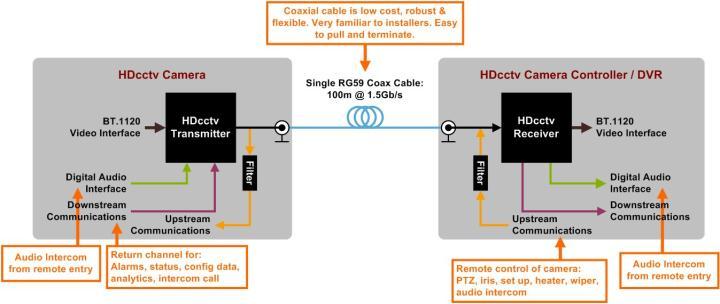
Requirements finalized February 2011
Steering and Manufacturing Members submissions of Proposals set for May 2011
Submission for ratification expected July 2011
Alliance Member companies' sample DVRs and cameras expected October 2011
Version 2.1
Long Distance Mode (300m RG59 / 100m Cat5 transmission)

Requirements finalized February 2011
Steering and Manufacturing Members to submit Proposals during July 2011
Submission for ratification expected September 2011
Alliance Member companies' sample cameras, DVRs, and monitors expected December 2011
Version 2.2
Native Optical Interface and Gen Lock
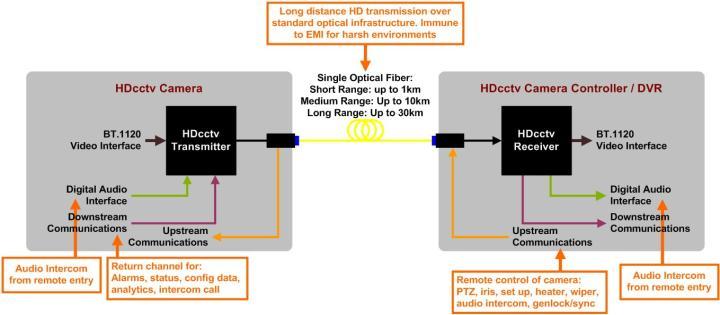
Submission for ratification expected March 2012
Version 2.3
Power over Cable
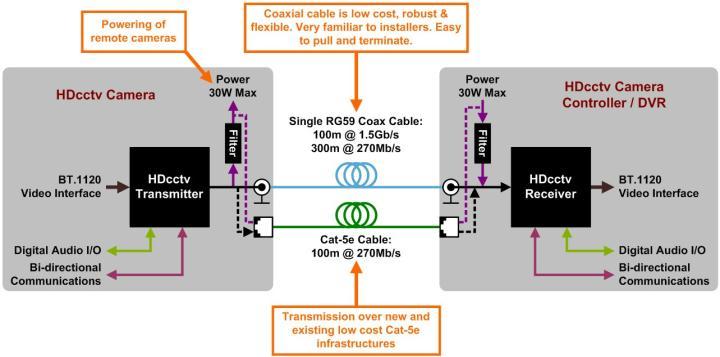
Submission for Ratification expected September 2012
Version 3.0
Under the unique license agreement between HDcctv Alliance and SMPTE, the HDcctv Standard is destined to track SMPTE's video format roadmap of successively increasing resolutions. (See, for example, this link.)
This table summarizes the economic benefits of the three video surveillance interface technologies expected to be in mass production ca. 2015:
